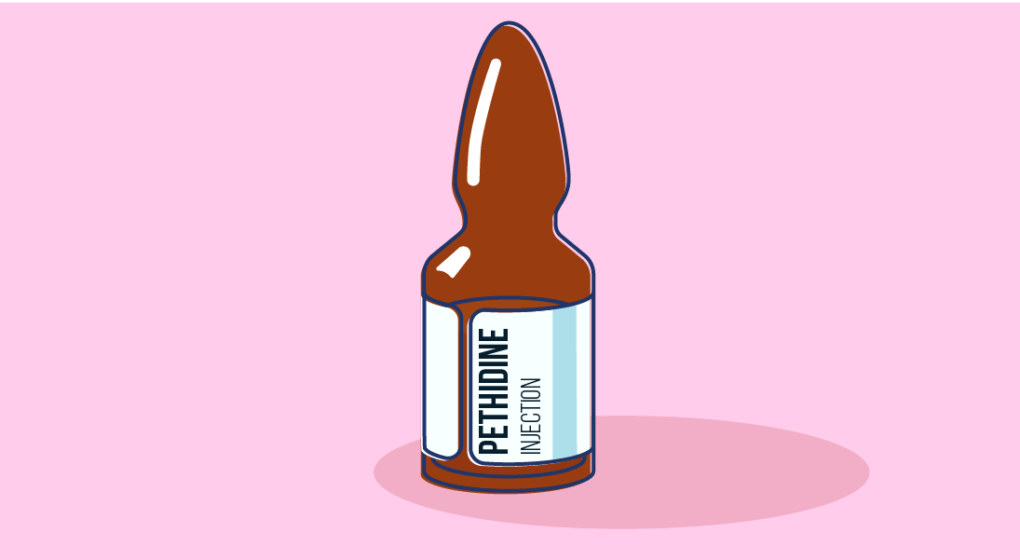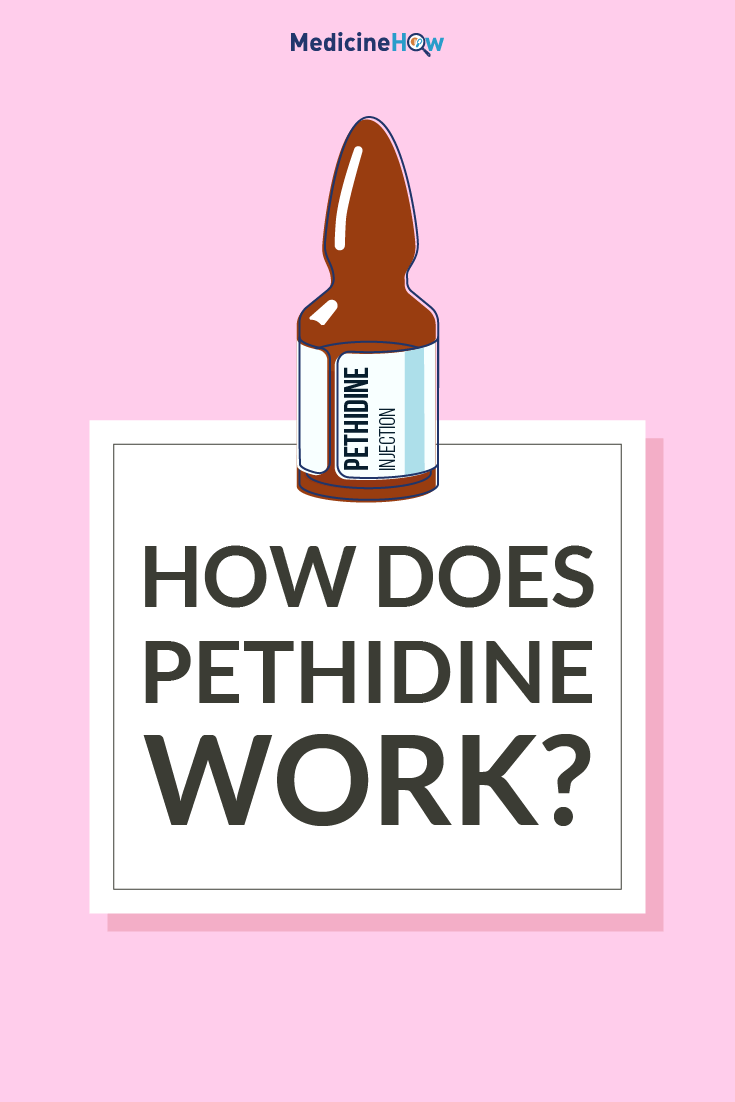
Pethidine, also known as meperidine, is a type of drug called an opioid. It works by activating opioid receptors that naturally exist in your body, which causes a number of effects on your body. One of these is to provide analgesia and relieve pain, which is what the drug is used for.
Pethidine is a relatively strong opioid and is usually used for moderate to severe pain. It is only available as an injection, so it is used for the relief of acute pain rather than long-term or chronic pain. It can also sometimes be used with other medications during anaesthesia.
What type of drug is it?
Pethidine is a type of drug called an opioid. This is a drug class that helps us to group drugs that work in a similar way together. Other opioid medications include:
- Buprenorphine
- Codeine
- Dextropropoxyphene (Propoxyphene)
- Fentanyl
- Hydromorphone
- Methadone
- Morphine
- Oxycodone
- Tramadol
What is Pethidine used for?
Pethidine is usually in the acute relief of moderate to severe pain. As it can only be administered via an injection, it is usually used in a hospital situation and is rarely recommended for chronic pain.
It is a strong opioid, which makes it a good option for severe pain. For milder pain, it is usually best to use a weaker opioid, such as codeine, because there is a lower risk of side effects.
Pethidine can also sometimes be used in combination with other medication during general anaesthesia.
How does Pethidine work?
Everyone naturally has endogenous opioids inside their body, which can bind to special receptors, called opioid receptors, to activate several effects in the body. When an endogenous opioid attaches to the right receptor, it can lead to several effects in the body including:
- Analgesia to relieve pain
- Slowing down of breathing
- Tiredness
- Difficulty defecating
Pethidine manipulates this natural process by activating the same receptors that the endogenous opioids do. It mimics the effect of natural opioids in your body.
It can also decrease the transmission of pain impulses in the body by interrupting the pain messages in the spinal cord and interfering with the messages coming from the brain in the central nervous system (CNS).
Side Effects
There are several general side effects of opioid medications such as pethidine that can affect some people, such as drowsiness, dizziness, headache, dry mouth and urinating less often.
You can find out more information about some of the specific side effects by clicking on them below.
Nausea
Constipation
Respiratory Depression
Dependence
Cautions
There are some people who may need special attention if they take pethidine due to other medications or health conditions they have. For example, if you have the following conditions often you may need a lower dose than usual:
- Slow heart rate
- Endocrine disease
- Hypothyroidism
- Adrenocortical insufficiency
- Myasthenia gravis
- Central nervos system (CNS) depression
- Frequent use of alcohol
Additionally, people with epilepsy are more likely to have a seizure while taking pethidine, so this should be considered.
Interactions
Taking pethidine at the same time as another drug can sometimes change their effect on your body because of the way they interact.
Some drugs that are used in the treatment of depression called selective seretonin reuptake inhibitors (SSRIs) can cause a condition called seretonin toxicity. The risk of this is higher if pethidine is taken at the same time, so you need to be on the lookout for early signs. This can also occur if you take it at the same time as other medications, such as tramadol and selegiline.
If you take it at the same time as ritonavir, your body will metabolize pethidine more quickly so that the pain relief is less effective. The dose of pethidine may need to be decreased.
Taking pethidine and moclobemide together lead to changes in blood pressure or the central nervous system. It is best not to take them at the same time and leave a break of at least 2 days between taking one and then the other.
Any medication that blocks the action of opioids, such as buprenorphine, naloxone or naltrexone, can decrease the action of oxycodone. These drugs are not usually used together.
All drugs that cause your breathing to slow down can increase the risk of a serious side effect of pethidine: respiratory depression. Many drugs to lower blood pressure, such as beta blockers, can have this effect. This combination can be used, but it's important that your doctor knows that you are taking pethidine and checks that the dose is right for your body.
Pregnancy and Breastfeeding
Pethidine is not usually recommended for women who are pregnant for two main reasons.
- There is an increased risk of respiratory depression in the baby, which can be fatal.
- The baby may experience withdrawal symptoms after birth due to the sudden decrease in dose of oxycodone when they are no longer connected to the mother's bloodstream.
Instead, it is best for pregnant women to take other medications ato relieve pain while they are pregnant, such as paracetamol. For more severe pain, a weaker opioid drug such as codeine is sometimes used.
For women who are breastfeeding, occasional doses of pethidine may be used. There may still be some risk to your baby, so it is essential to keep the treatment time as short as possible.
Pin it!


